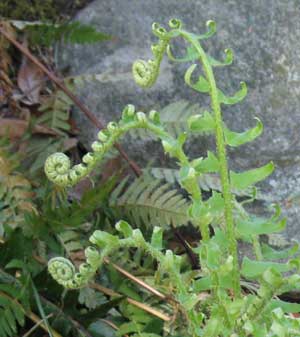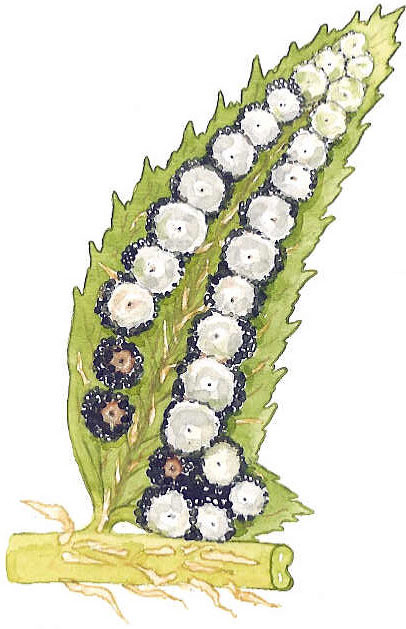| Polystichum Earlier placement: | ||
Shield fern | ||
|
Etymology
Polystichum is from the Greek polys, many, + stichos, row. The sori are in many rows.
Description
Rhizome: erect, scales.
Frond: evergreen, monomorphic or weakly dimorphic. Stipe: scaly, vascular bundles: 4 or more, in an arc. Blade: 1-3 pinnate, lanceolate; at emergence the croziers droop backwards, glossy, linear to lanceolate scales below, no hairs. Pinnae: usually an upper side lobe, costae grooved above, grooves discontinuous from rachis to costae, segments spinulose, veins free, forked, anadromic. Sori: round, in 1 (2) rows between midrib and margin, indusium: peltate or rarely absent, central, sporangia: yellow or brownish to black.
Distinctive Characteristics
similar to Dryopteris, but distinguished by the upward ear on the pinnae, commonly spiny margins, the peltate indusia, and discontinuous grooving between rachis and costa. It also has many characteristics in common with Cyrtomium, but the latter has netted veins; here they are always free, perhaps forked.
|
|
|

When Polystichum fronds unfurl, the bend-over-backwards tassel-like form is characteristic of the genus. Not every specimen shows it, however. �Photo - Tom Stuart |
